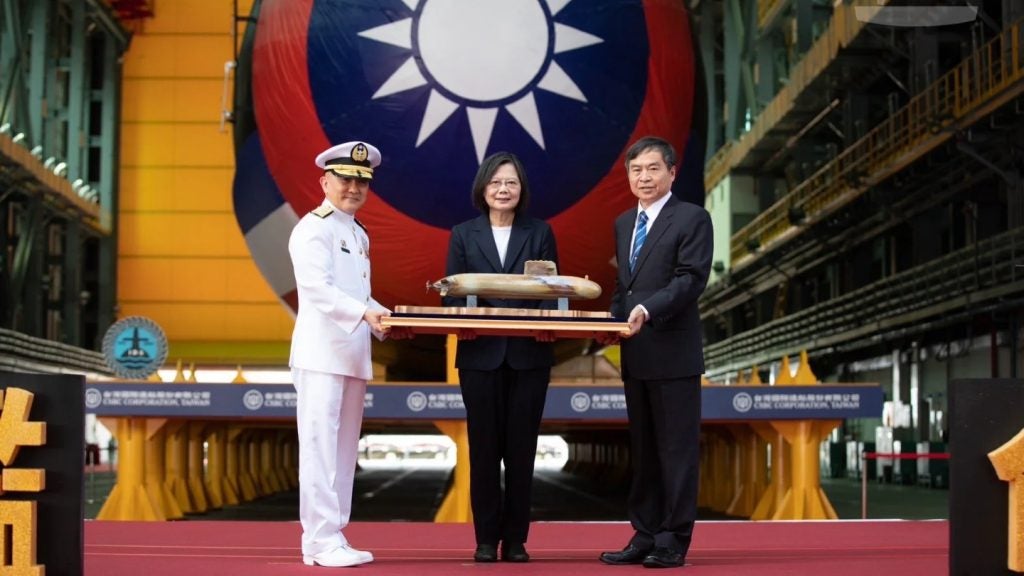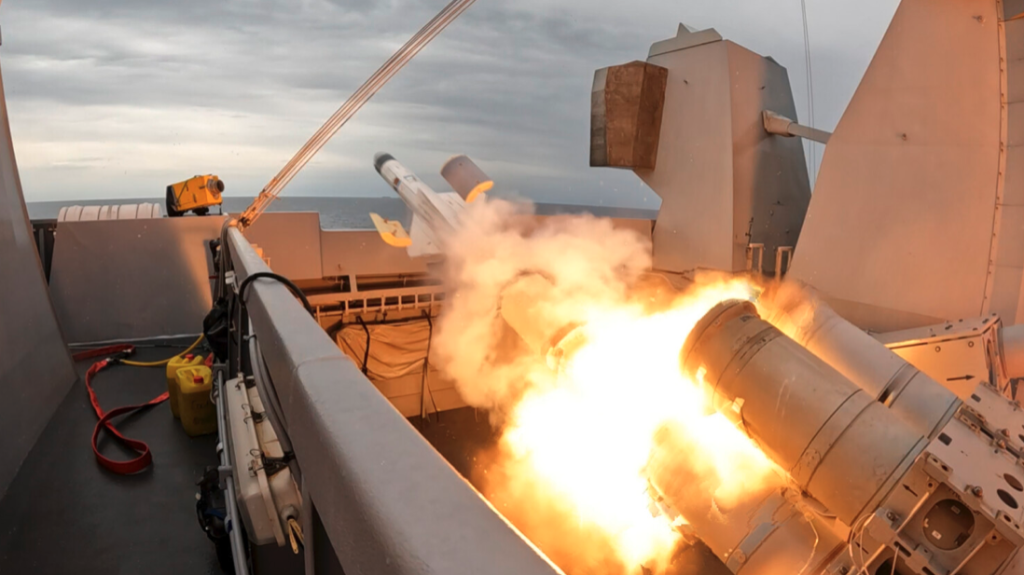Taiwan’s Ministry of Defence today (28 September) unveiled the country’s first indigenous defence submarine in a milestone project intended to deter Beijing’s aggression in the South China Sea.
Taiwanese President Tsai Ing-wen described the submarine as a “substantial step in boosting self-sufficiency in defence and protecting territorial waters” on X, formerly Twitter.
Analysts say it is unlikely to discourage China’s military drills, which have escalated in recent weeks and included exercises on land facing Taiwan.
Ing-wen oversaw the submarine’s inauguration in the southern city of Kaohsiung. Known as ‘Narwhal’, the submarine is part of a project started in 2016 to modernise Taiwan’s military forces.
Seven more indigenous submarines are planned for the coming years. Following Narwhal, Taipei has said it intends to deploy its second domestically made submarine by 2027, and potentially equip later models with missiles.
A drop in the ocean?
Taiwan’s grand unveiling has been met with scepticism. Critics have said the submarine is a waste of Taiwanese defence expenditure and futile against the might of the Chinese navy.
“The submarine is technologically competitive, but one alone does not pose a major problem for China – nor is it a sufficient deterrent,” says James Marques, Defence Analyst at GlobalData. “Taiwan is currently building its second of eight submarines, but this will take several years and substantial investment.”
Narwhal is also not expected to enter military service for another two years.
Reports of China amassing fighters, drones, bombers, warships and aircraft carriers along its Pacific coastline – less than 130km from Taiwanese shores – have been met with unease in Taipei.
China, which has long viewed democratically ruled Taiwan as its own territory, said the rise in military drills was due to the “arrogance of Taiwan independence separatist forces”, The Guardian reported.
Beijing’s Taiwan Affairs Office spokesperson Zhu Fenglian said, “The provocation of Taiwan independence continues all day long, and the actions of the People’s Liberation Army to defend national sovereignty and territorial integrity are always ongoing.”
The Dragon’s dominance in the South China Sea
The endlessly discussed ‘Rise of the Red Dragon’ in global spheres of power revolves around an expanding Chinese military – which dwarfs Taiwan’s.
Beijing has boasted the largest navy in the world since 2020 and has ramped up total defence spending to a record $241bn (1.8trn yuan) in 2023. By contrast, GlobalData’s Taiwan Defence Market Size and Trends (2023-28) report reveals that Taiwanese defence expenditure amounted to $19.9bn in 2023.
This may represent an increase from $15.3bn in 2022, but Taipei’s increased defence spending is unlikely to strike fear in Chinese hearts.
“Should China follow in Russian footsteps and invade a neighbour it views as sovereign territory, Taiwan would ultimately still depend on allies such as US, Japan or Australia for help,” said Marques.
Beijing, however, knows that the US and other western powers are distracted – geopolitically and financially – by ongoing efforts to support Ukraine’s war efforts against the Russian invasion.
Washington regards Taiwan as a partner. Vested interests in Taiwan’s world-leading semiconductor industry have resulted in a so-called “silicon shield” around the island, although this may be in jeopardy.
President Biden has said US forces would defend Taiwan in the event of a Chinese invasion, despite the US claiming it “does not have diplomatic relations with Taiwan”.
Semiconductor production is not the only reason for China, the US and other nations’ strategic interest in Taiwan.
Located in middle of the South China Sea – which holds an estimated 11 billion barrels of untapped oil and 190 trillion cubic feet of natural gas – Taiwan offers access to significant natural resource wealth.
In attempting to liberate itself from the geopolitical tussles of global superpowers, Taiwan has demonstrated the futility of developing its own submarine fleet.
Such vessels offer Taiwan sovereignty over its naval defence strategies, but most analysis favours cultivating closer geopolitical relations with anti-Sino powers willing to defend Taiwanese shores.
Narwhal might feel like a step towards self-empowerment, but, as a deterrent, it is as useful as a dagger against a dragon.











